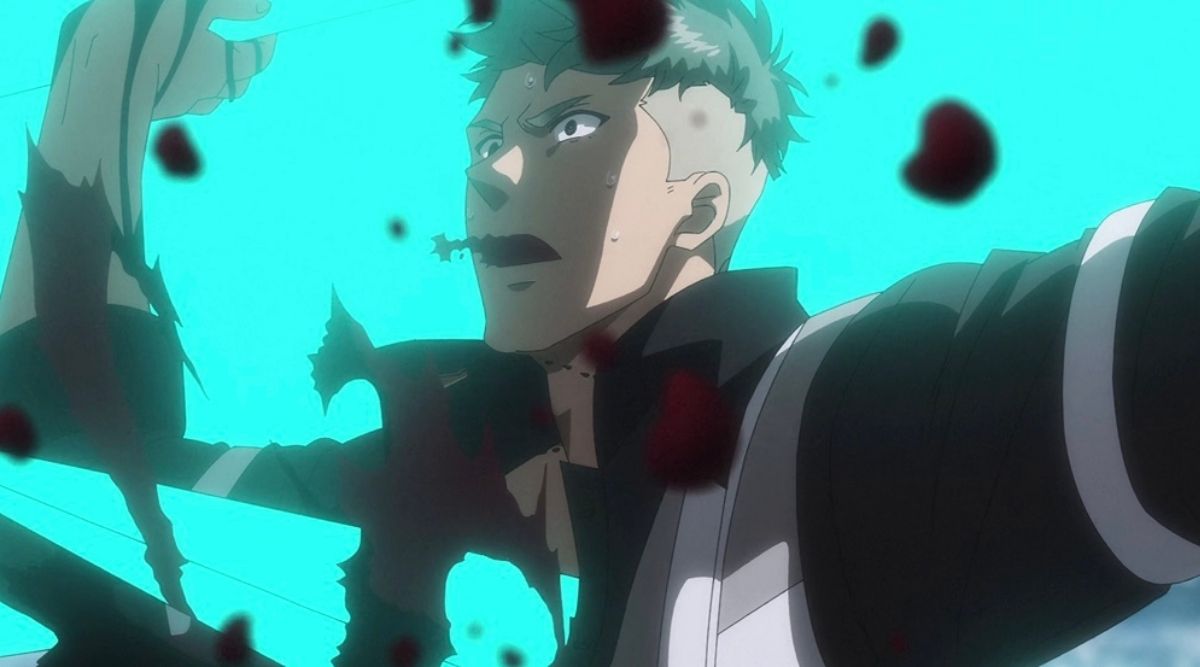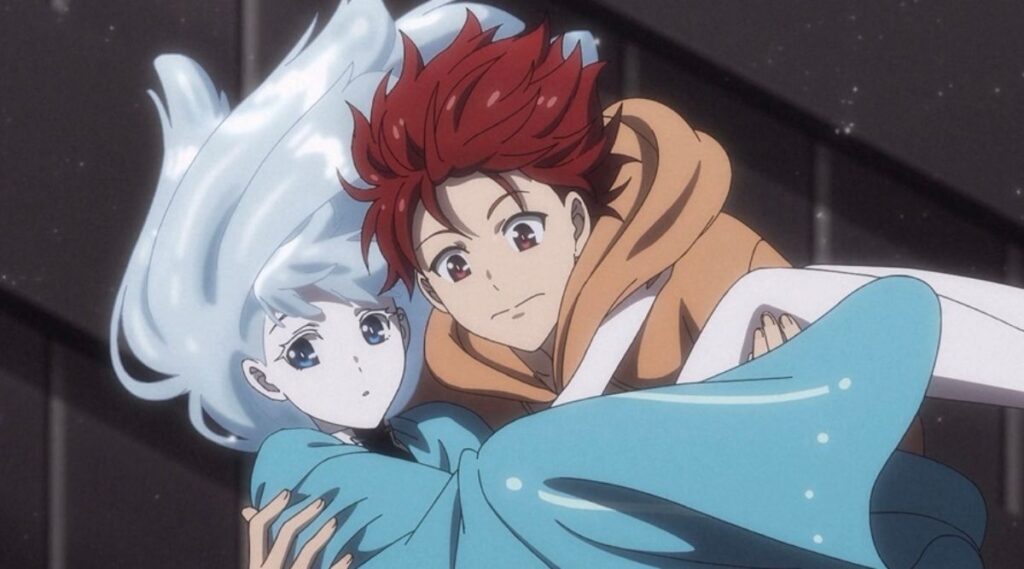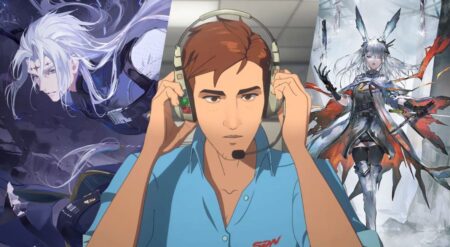In its first four episodes, SI-VIS: The Sound Of Heroes, produced by Studio VOLN, follows Kyoya Minama (Anan Furuya, Overtake!) as he heads to Tokyo with hopes of joining his pop star cousin Yosuke’s (Daisuke Namikawa, Train to the End of the World) band. Little does he know, SI-VIS does far more than win the hearts of its fans; it’s also secretly protecting the world from an insidious threat.
Anime is known for blending the serious with the bizarre. It takes off-kilter characters and frequently succeeds in embroiling them in emotional stories that can grip viewers’ heartstrings, despite the outlandish antics that unfold between the big plot beats. But while many series accomplish this impressive feat, not all do. And if SI-VIS: The Sound Of Heroes hopes to be among the successful, it may need to go back to the studio for some more rehearsals.
Over its first four episodes, the series draws both Kyoya and the audience into its world at a good pace. After the calamitous events of the first episode, Kyoya must be brought up to speed quickly as he is thrust into the role of world-saving pop star. And while the threat of global annihilation at the hands of the mysterious Xenos is the main threat, the perils of each attack come with a surprising and disturbing consequence.
The gimmick at the core of SI-VIS: The Sound Of Heroes is unique.

Forming a giant pillar in the sky that only certain people can see, the Xenos plunge into a targeted place on Earth, destroying anything it touches, leaving only a gaping hole in the ground if they aren’t driven off in time. Shortly after, the earth pulls itself together, and it is as if the place that was destroyed never was. Locations, events, and even people are scrubbed from the memories of all but a few.
This special haunting side effect creates an element to the hardships that feels singular to the series. As the pop icons of SI-VIS perform for the masses to drive off the Xenos with the accumulated Idea Energy their performances draw out of the crowds, they carry an incredible burden that no one knows about. And if they fail, none of the adoring masses will ever remember what they did.
This isolation, as the band seems to virtually live in a different reality from the rest of the world, is touched on in the opening episodes. When Kyoya first arrives in Tokyo, his cousin Yosuke dies protecting him. This is a tragic loss for Kyoya, which is compounded when he discovers the nature of dying at the hands of Xenos. Having no one remember his idolized cousin sends Kyoya into emotional turmoil in more than one instance.
How SI-VIS portrays the band members’ isolation is the show’s greatest strength.

Other supporting characters also bear scars from the Xenos threat on Earth. The mysterious girl Naga is a near-total enigma. As the only person to survive a Xenos landfall event, the girl seems vitally important, despite her current inability to present complex thoughts or emotions.
The other noteworthy character in the series is Siren (Ayane Sakura, Sakamoto Days). SI-VIS’s lead singer and songwriter, Siren, stands out for her many unusual habits and the considerable leeway everyone associated with the group gives her. While frequently distant, she also comes through in key moments, proving instrumental in helping Kyoya get his feet under him after Yosuke’s death. Whether or not there is genuine depth to her, or she’s just a quirky character who conveniently comes through at need, remains to be seen. Either way, the questions surrounding her personality are intriguing at the moment.
The pain of their struggle and the isolation it thrusts on the members of SI-VIS is the series’s greatest strength. It plays out well in these episodes, laying down a firm emotional foundation for the coming narrative. However, the series fails the hardest when it fails to harmonize with this lead plot thread.
The production quality is inconsistent throughout SI-VIS’s first several episodes.

Character attitudes, humor placement, and even some musical choices fail to jive with the pain that runs throughout SI-VIS: The Sound Of Heroes. This creates moments of disharmony that make everything feel off. The tonal failings can create conflicts in key moments that undercut the story’s power.
The other place where the production fails to deliver consistent results is in its animation. There are moments where details and motion are packed into shots, making hair and clothing whip in the wind as a concert plays out and the Xenos are fought. However, when the series shows one of its pop stars dancing, things aren’t so smooth.
Every time Kyoya busts a move, the character looks wooden and awkward. There is no flow, no life in the motions that play out. Given how early and often the series establishes the young man’s love of dance, you’d expect the animation to bring it to life with every bit as much care as it does an action sequence.
SI-VIS: The Sound of Heroes has a lot going for it in its opening chapters. A dangerous threat that brings an original angle with its world-ending danger lays down a strong primary problem. Some compelling characters build onto that core, giving viewers more personal elements to bond with.
If the series can tweak its tonal problems and smooth out its uneven animation, it could yet deliver something amazing. But, even with these problems, it still feels like it will bring something solidly good at least.
SI-VIS: The Sound Of Heroes is streaming now on Crunchyroll.








